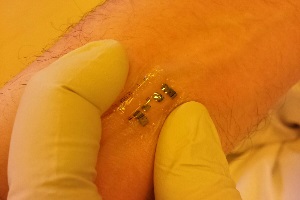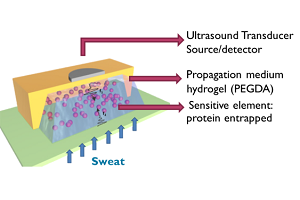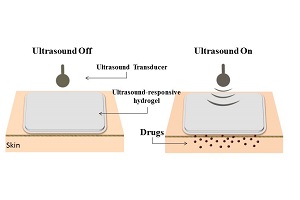Epidermal electronics technology is based on matching the mechanical characteristics (elastic modulus and bending stiffness) of epidermis with flexible electronics, in order to insert traditional electronics in elastomeric sheets to be placed on skin via van der Waals forces and negligible mechanical loading, like a temporary tattoo. This strategy allows to overtake the incompatibility between the soft and curvilinear human body and rigid, planar, and physically static electronic devices.
Our aim is to eliminates this profound mismatch in properties developing a complete set of materials, production processes, and design layouts. Configuring hard inorganic functional materials into open mesh microarchitectures and embedding them in soft elastomeric film, allows the production of devices that can intimately integrate onto or into the human body for diagnostic, therapeutic, or surgical function.
The exploitation of both conductive and piezoelectric materials (i.e. AlN) and their specific characteristics such as ultrathin layout, optimized geometrical design will allow to reach the best stretching conditions, skin like mechanical properties and actuation capabilities for ultrasonic applications and self-powering.
This kind of technology could be used to create different kinds of devices, like sensors actuators or even multifunctional devices with wireless or radiofrequency control. The main goal is to develop a wearable platform for the monitoring of physiological parameters, like blood pressure and temperature, with the capability to communicate with external platform for the data transfer (phone, computer…).



